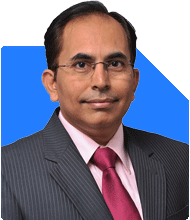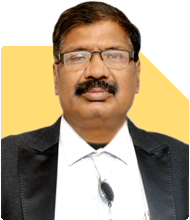Hello Sir, pinaki here I have invested in SIP 5000 each of 20k..and 6 lakh lumsum in SBI flexi cap fund.....HDFC mid cap opportunity 5k, kotak flexi cap 5k, parag parikh flexi cap 5k, ABSL flexi cap 5k from last 1 year and having a goal to reach 1 cr in next 10 yrs .. am I in the right path to achieve my goal?
Ans: Pinaki,
I hope you are doing well. It’s great to see that you have taken steps towards building your financial future. Investing through SIPs and lump sum amounts shows your commitment to disciplined investing. Let’s delve deeper into your investments and evaluate your path towards achieving your goal of Rs 1 crore in the next 10 years.
Understanding Your Current Investments
You have diversified your investments across various mutual funds. Here’s a summary of your current SIPs and lump sum investment:
SIP Investments: Rs 5,000 each in four funds, totaling Rs 20,000 per month.
Lump Sum Investment: Rs 6 lakh in SBI Flexi Cap Fund.
The funds you have chosen are a mix of flexi cap and mid cap funds, which is a good start.
SIPs: A Steady Approach
Systematic Investment Plans (SIPs) are an excellent way to invest regularly. They help in averaging out the cost of investments and mitigate market volatility.
Evaluating Flexi Cap Funds
Flexi cap funds provide flexibility in investing across large, mid, and small-cap stocks. They offer a balance between risk and return. Your allocation in flexi cap funds shows a balanced approach.
Mid Cap Fund Investment
HDFC Mid Cap Opportunities Fund adds a bit more risk but also the potential for higher returns. Mid cap funds can outperform in a growing market but can also be volatile.
Goals and Expectations
Your goal is to accumulate Rs 1 crore in 10 years. To assess if you are on the right path, let's consider a few factors:
Expected Returns
Historically, equity mutual funds in India have delivered returns between 12-15% per annum. However, past performance is not indicative of future results. It's important to have realistic return expectations.
SIP Growth Projection
If you continue investing Rs 20,000 per month in SIPs, here’s how it might grow over 10 years, assuming an average annual return of 12%:
Total SIP Investment: Rs 24 lakhs.
Estimated Future Value of SIPs: Around Rs 47.5 lakhs.
Lump Sum Investment Growth
Your Rs 6 lakh lump sum investment in the SBI Flexi Cap Fund, assuming an average annual return of 12%, could grow to approximately Rs 18.6 lakhs in 10 years.
Total Future Value
Combining your SIPs and lump sum investments, the total estimated future value might be around Rs 66.1 lakhs. This is a substantial amount, but it falls short of your Rs 1 crore goal.
Adjusting Strategy for Goal Achievement
To bridge this gap, consider the following adjustments:
Increase SIP Contributions
One straightforward way to reach your goal is to increase your monthly SIP contributions. If you increase your SIPs from Rs 20,000 to around Rs 30,000 per month, the future value could be closer to Rs 71 lakhs from SIPs alone. Combined with your lump sum, you would be nearer to your Rs 1 crore goal.
Annual Increase in SIP
Consider an annual step-up in your SIP contributions. For example, increasing your SIP by 10% every year can significantly enhance your corpus over time.
Reinvest Dividends
Ensure that you have chosen the growth option for your mutual funds. Reinvesting dividends can help in compounding your returns over time.
Regular Review and Rebalancing
Periodically review your portfolio. Market conditions and fund performances can change. Rebalancing your portfolio ensures it stays aligned with your goals.
Actively Managed Funds: A Potential Edge
You mentioned having invested in several flexi cap and mid cap funds. Actively managed funds can potentially offer better returns than index funds. Experienced fund managers can make tactical decisions to navigate market conditions. This flexibility might provide an edge in achieving higher returns.
Benefits of Actively Managed Funds
Actively managed funds have the potential to outperform benchmarks, especially in volatile markets. Fund managers actively pick stocks based on research and market conditions, which might provide better returns.
Regular Funds Over Direct Funds
While direct funds have lower expense ratios, investing through a Mutual Fund Distributor (MFD) with a Certified Financial Planner (CFP) credential can offer valuable benefits. They provide professional advice, portfolio reviews, and help in rebalancing investments as needed.
Disadvantages of Direct Funds
Direct funds require more active management by the investor. Without professional guidance, one might miss critical market signals or fail to rebalance the portfolio appropriately. This can potentially impact the overall returns.
Value of Professional Guidance
A Certified Financial Planner can help you navigate complex market conditions. They can provide tailored advice, ensure your investments align with your goals, and offer periodic reviews to keep your portfolio on track.
Investment Monitoring and Adjustments
Regular Portfolio Reviews
Review your portfolio at least once a year. This helps in assessing fund performance and making necessary adjustments. Underperforming funds can be switched for better-performing ones.
Rebalancing Strategy
Rebalancing involves adjusting your portfolio to maintain your desired asset allocation. It helps in managing risk and optimizing returns. This is crucial in volatile markets.
Emergency Fund and Insurance
Ensure you have an adequate emergency fund and sufficient insurance coverage. This protects your investments from being disrupted in case of unforeseen events.
Tax Efficiency
Tax Implications on Investments
Understand the tax implications of your investments. Long-term capital gains tax (LTCG) on equity funds is applicable beyond Rs 1 lakh of gains. Plan your investments to be tax-efficient.
Utilize Tax-saving Opportunities
Investing in tax-saving instruments like ELSS (Equity Linked Savings Scheme) can provide tax benefits under Section 80C. This not only helps in saving tax but also in growing your wealth.
Financial Discipline
Stick to Your Investment Plan
Stay disciplined and avoid making impulsive decisions based on short-term market fluctuations. Stick to your investment plan and review it periodically.
Avoid Frequent Fund Switching
Frequent switching of funds can incur exit loads and impact returns. Stick to your chosen funds unless there's a strong reason to change.
Long-term Perspective
Focus on Long-term Goals
Investing is a long-term journey. Focus on your long-term goals and avoid getting swayed by short-term market volatility. Patience and discipline are key to successful investing.
Diversification
Ensure your portfolio is well-diversified across different asset classes. This reduces risk and enhances the potential for returns.
Conclusion
Pinaki, your current investment strategy shows a commendable commitment to achieving your financial goals. You have diversified across different funds and invested regularly. However, to reach your goal of Rs 1 crore in 10 years, you might need to make some adjustments.
Consider increasing your SIP contributions, adopting an annual step-up strategy, and ensuring you have the growth option for your mutual funds. Regular portfolio reviews and rebalancing are crucial to staying on track.
Investing through actively managed funds with professional guidance can provide an edge in achieving higher returns. Stay disciplined, focus on your long-term goals, and avoid making impulsive decisions based on market fluctuations.
Remember, investing is a journey, and with the right strategy and discipline, you can achieve your financial goals.
Best Regards,
K. Ramalingam, MBA, CFP,
Chief Financial Planner,
www.holisticinvestment.in




























